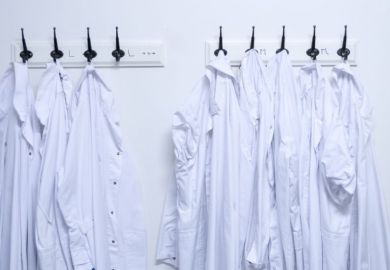We would all like to snatch a look behind the green baize door. The private face of celebrity, individual and institutional, interests us much more than the manipulated public face foisted, insultingly, upon us by contemporary public relations gurus.
Yet in recent years, behind-the-scenes revelations have become just another part of managed PR. In books and on television, we have seen the monarchy, the British Museum, art galleries, airports, hospitals, public schools and Sir Elton John similarly "revealed" to the point of weariness.
A look up the skirts of a civic institution has a well-established pattern. You need a little charming antiquity, amusing elbow-patched eccentrics of a not immediately actionable kind, the search for a new role and a bit of scandal far enough in the past to ensure the whistleblower/presenter does not lose his insider status or his reserved space in the bicycle shed. Above all, we must discover, at the heart of it all, pipestem-gripping British decency and the fact that granny is really a bit of a go-go dancer. Richard Fortey's affectionate look at his former employer and current pension provider follows this plan to the letter. The subtitle should read "authorised", not "secret".
Fortey is an expert on trilobites - don't ask, it is explained at length and it really isn't that boring - and Dry Store Room No 1 is the place where all the miscellaneous junk of the museum ends up in limbo. The book is organised as a trudge through various floors and buildings, with user-friendly explanations of some of the work that goes on in an institution dedicated to the endless, and ultimately impossible, task of classifying and collecting specimens representing the entire natural world of animals, plants and rocks.
We inevitably pass through some points of interest. Surprisingly, one is the various systems, Linnaean and otherwise, for classifying animals and plants so that holotypes (the ancient preserved specimens with reference to which species are defined) rub shoulders with modern DNA profiles.
It is when dealing with subjects such as this that Fortey is at his best, showing you that you knew all sorts of things you didn't realise and were woefully ignorant of all sorts of other things of which you hitherto felt certain.
One of his unfortunate tendencies is to dart off into starry-eyed hagiography of colleagues instead of further pursuing insights into such matters as the calculation of the age of a whale by the layers of wax deposited in its ears or the growth rate of lichen by the opportunistic use of the dates on host gravestones. These are tricks of the trade of which we might learn more.
There are insights into the bureaucratic mind, too - the expert on cryptogams (plants) who was misidentified, during the war, as an expert on cryptograms (codes) and shipped off to Bletchley Park, where he distinguished himself by using algae-preserving techniques to rescue the legibility of recovered U-boat codebooks. Links between national museums and the forces previously went unexamined; a warship spirited away the Linnaean collection, now housed on Piccadilly, just as another "acquired", without a second thought, the Easter Island figure that can be seen in the British Museum. The great scandal, of course, still eating at the heart of the Natural History Museum, was the Piltdown Man, the fake "missing link" between ape and man created by Charles Dawson, a Sussex solicitor, that successfully fooled the experts for years. Its history makes salutary, amusing reading.
Fortey does his duty in defence of his museum, arguing eloquently for its importance in a world of global warming and species loss. He recounts with flair the museum's important role in the aversion of ecological tragedies such as the Great Libyan Screwworm Disaster and the British Muskrat Invasion.
But it is only between the lines that we pick up on the material that makes works such as this truly worthwhile. Colleagues have occasionally loved the bottle too much or engaged in unsuitable forms of public mating. The museum, like so many others, has had its fair share of rogues, fools and strutting egotists among its directors and trustees, but only in the past. We sense, rather than see within our institutions of learning, the triumphant progress of the blue suits and the religion of management with its branding of space, mission statements and logo areas and the contemptuous neglect of basic research and housekeeping in favour of sexy projects that attract funding. And there is the terrible and counterproductive need to publish regardless of quality, the decline from a unique reserve of expertise to a fairground attraction of nodding dinosaurs that are about as convincing as green toupees - all these deserve more space and a little more venom.
For Fortey, museums are ultimately about the people who work in them, often from generation to generation, and a sadness tinges this book in that it is about a species of selfless and dedicated researcher who knows his whole species to be heading for extinction as its environment shifts. The pity is that Fortey did not seize this opportunity more firmly to take a few of his predators with him.
The author: Richard Fortey
British palaeontologist Richard Fortey spent most of his working life at the Natural History Museum in what he described as "the plum job in research", studying the many thousands of trilobites, even naming numerous species.
Fortey retired as senior palaeontologist at the museum in 2006 after 35 years.
He has been scathing about the increasing use of electronic imagery and tricks in museum displays. In his contribution to the book Museums for the People? he says: "The tendency to replace real specimens with electronic games and virtual whizzbangs is short sighted. This kind of show does not stick in the memory. It's not so much 'dumbing down' as 'editing out'. We have to face the fact that it is very difficult to make a display out of the process of understanding."
Fortey's last book was The Earth: An Intimate History (2004), hailed as "the best natural history of the first four billion years of life on earth" (The Guardian) and "a wonderful biography of rock and life! He has restored palaeontology to its rightful place in the pantheon" (The Sunday Times).
His previous books include Life: An Unauthorized Biography, Trilobite! Eyewitness to Evolution and The Hidden Landscape, named the Natural World Book of the Year in 1993.
He won the Lewis Thomas Prize for Science Writing in 2003. Last year, he was president of the Geological Society for its bicentennial year.
He appeared on University Challenge - The Professionals in 2004 as one of the Palaeontological Society team that beat the Eden Project.
Dry Store Room No. 1: The Secret Life of the Natural History Museum
Author - Richard Fortey
Publisher - HarperPress
Pages - 338
Price: £20.00
ISBN - 9780007209880
Published - 7 January 2008



